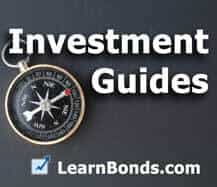 Total Return is calculated by taking the total dollar amount an investor has gained from holding a bond and dividing it by the initial purchase price of the bond. It includes all of the below factors:
Total Return is calculated by taking the total dollar amount an investor has gained from holding a bond and dividing it by the initial purchase price of the bond. It includes all of the below factors:
- Simple interest
- Interest compounded on interest
- Changes in the bond’s market price
- Any other payments received or made (for example commission paid on a transaction to buy a bond).
Financial institutions do a total return analysis on their bonds and other securities on a daily basis. This is known as “marking to market” and provides better and more up to date information on performance of financial products and potential risk to different events in the market.
Total Return vs. Yield to Maturity (YTM)
To understand, the current profit or loss of a bond investment an investor needs an alternative tool to Yield To Maturity (YTM). YTM includes certain assumptions about the future that may not play out, namely:
- That the investor holds the bond until maturity. Many investors sell their bonds prior to their maturity date.
- That the the coupon payments received on the bond are reinvested at the YTM rate. Interest rates are likely to change over the life of a bond and coupon payments are therefore likely to be reinvested at a different rate than the YTM rate.
In comparison to YTM which is forward-looking, total return assesses past performance up till a given instant (such as the current day). As Total return looks at the past there are no assumptions that need to be made in the calculation. Because of this fact total return is the most accurate gauge of the performance of a bond investment.
Using Total Return to Evaluate Investment Strategy
Total return is of particular interest to investors who pursue an active trading strategy and who seek to buy a bond when its price is low and sell when it is high, instead of holding to maturity. It also allows investors to compare projected YTM with total return to date, to evaluate the desirability of a buy and hold strategy (no trading commissions to be paid, pre-defined principal paid to investor at maturity) compared to an active trading strategy (trading commissions to be paid, market price of bond may go up or down).
For more definitions and explanations please visit the Learn Bonds glossary where we give the meanings of many additional bond terms.
This lesson is part of our Free Guide to the Basics of Bond Investing. Continue to the next guide here.
Trusted & Regulated Stock & CFD Brokers
What we like
- 0% Fees on Stocks
- 5000+ Stocks, ETFs and other Markets
- Accepts Paypal Deposits
Min Deposit
$200
Charge per Trade
Zero Commission on real stocks
64 traders signed up today
Visit Now67% of retail investor accounts lose money when trading CFDs with this provider. You should consider whether you can afford to take the high risk of losing your money.
Available Assets
- Total Number of Stocks & Shares5000+
- US Stocks
- German Stocks
- UK Stocks
- European
- ETF Stocks
- IPO
- Funds
- Bonds
- Options
- Futures
- CFDs
- Crypto
Charge per Trade
- FTSE 100 Zero Commission
- NASDAQ Zero Commission
- DAX Zero Commission
- Facebook Zero Commission
- Alphabet Zero Commission
- Tesla Zero Commission
- Apple Zero Commission
- Microsoft Zero Commission
Deposit Method
- Wire Transfer
- Credit Cards
- Bank Account
- Paypall
- Skrill
- Neteller
What we like
- Sign up today and get $5 free
- Fractals Available
- Paypal Available
Min Deposit
$0
Charge per Trade
$1 to $9 PCM
Visit Now
Investing in financial markets carries risk, you have the potential to lose your total investment.
Available Assets
- Total Number of Shares999
- US Stocks
- German Stocks
- UK Stocks
- European Stocks
- EFTs
- IPOs
- Funds
- Bonds
- Options
- Futures
- CFDs
- Crypto
Charge per Trade
- FTSE 100 $1 - $9 per month
- NASDAQ $1 - $9 per month
- DAX $1 - $9 per month
- Facebook $1 - $9 per month
- Alphabet $1 - $9 per month
- Telsa $1 - $9 per month
- Apple $1 - $9 per month
- Microsoft $1 - $9 per month
Deposit Method
- Wire Transfer
- Credit Cards
- Bank Account



